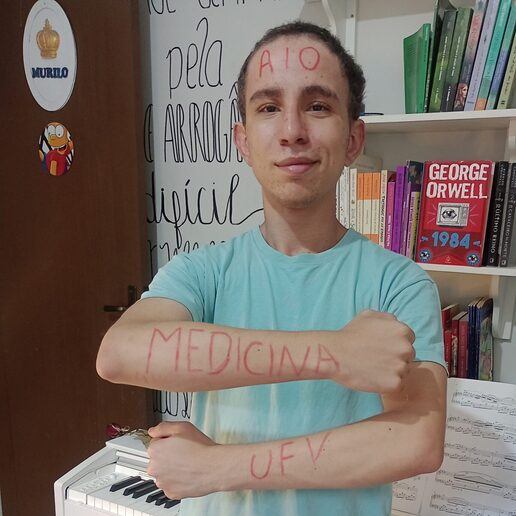USF 2018/2
Read the text carefully.
First human cells grown in sheep embryos in organ donation breakthrough
By Staff Reporter Sunday 18 February 2018 23:40 GMT

Scientists say they have grown sheep embryos containing human cells, marking a significant step towards cultivating human organs in animals.
It is hoped growing the body parts in animals could not only reduce transplant waiting lists but also lower the transplant rejection rates because they could be grown with a patient's own cells.
Scientists have long attempted to grow organs of one species inside another and have previously successfully grown a rat pancreas inside a mouse.
Last year, scientists from the University of California created human-pig hybrid embryos in which about one in every 100,000 cells was human.
The same team this week announced they had achieved similar sheep embryos, in which around one in every 10,000 cells was human.
The scientists say they are already ¹ able to genetically modify pig and sheep embryos so the animals are unable to develop a pancreas. The hope is that implanting human cells in such embryos would result in the animal growing a human pancreas.
The embryos are currently only allowed to develop for 28 days and researchers say they would like to extend the deadline to get a better idea of how the cells go on to specialize.
2 “We have already generated a mouse pancreas in rats and then transplanted those in to a diabetic mouse and were 3 able to show almost a complete cure without any immunosuppressants,” Dr Hiro Nakuachi, who is leading the research, told the American Association for the Advancement of Science in Austin, Texas.
“When it comes to human-sheep it seems more difficult. So we would like to proceed a little longer and this time use organ-deficient embryos.
“It could take five years or it could take 10 years but I think eventually we will be able to do this.”
Certain organs in pigs and sheep are similar in size to those in humans, making them suitable animals on which to carry out the tests.
Retrieved from https://www.independent.co.uk/news/science/sheep-embryos-human-cells-hybrid-organ-donation-breakthrougha8216821.html (adaptado).
Consider the statements about the text and choose the alternative in which there are only correct propositions.
I. One of the research intentions is growing human organs inside animals and reduce transplant waiting lists.
II. Dr. Hiro Nakuachi, responsible for the research, created human-pig hybrid embryos with 100,000 cells and realized the procedure will take a little longer to be approved.
III. According to the research, pigs and sheep will take from five to 10 years to be suitable animals on which to carry out the tests about the pancreas.
IV. Using the patient’s own cells to be cultivated inside another species until they become organs for transplants, makes the researchers believe that the transplant rejection rates can be lower.
Mark the correct alternative.
Only III is correct.
I and IV are correct.
I, II, and IV are correct.
II and III are correct.
I, III and IV are correct.
Resolução
Para entender e responder a questão corretamente, é necessário fazer uma leitura atenta do texto, identificando as informações principais e comparando-as com as afirmações apresentadas nas alternativas. É essencial também focar no entendimento do propósito da pesquisa mencionada e as expectativas dos cientistas em relação aos benefícios e à viabilidade das experiências.
Dicas
Identifique e compare as informações do texto com cada afirmação apresentada.
Atenção aos detalhes, como números e prazos mencionados no texto.
Considere o objetivo geral da pesquisa e como isso se relaciona com as afirmações dadas.
Erros Comuns
Um erro comum é escolher uma alternativa sem verificar todas as afirmações que ela contém, levando a uma resposta incorreta mesmo se parte da alternativa estiver correta.
O exercício demanda a habilidade de compreensão leitora em inglês, identificando informações específicas e comparando-as com as afirmações apresentadas. É necessário entender a estrutura do texto expositivo e a forma como as informações estão organizadas e apresentadas.





